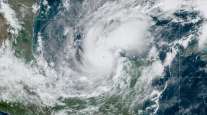Staff Reporter
FHWA Gives Florida DOT $25 Million for Irma Relief

Florida’s Department of Transportation will receive $25 million in federal funding for relief efforts in the wake of the damage caused by Hurricane Irma.
Gov. Rick Scott announced Sept. 13 that the Federal Highway Administration is providing “quick-release” emergency funds to help the state pay for immediate road and bridge repairs, detours and debris removal.
“I want to thank President Trump, Transportation Secretary Elaine Chao and the entire administration for their commitment to helping Floridians impacted by Irma,” Scott said. “The Florida Department of Transportation is already responding in full force to quickly repair Florida’s roads and transportation infrastructure damaged in the storm, and this critical funding will enhance our efforts to ensure the safety of families as they travel through our state.”
The funding comes from FHWA’s emergency relief program, which is authorized $100 million annually and provides supplemental help to unexpected disaster costs. According to FHWA, this relief program devotes money to federal-aid highways that have suffered “serious damage as a result of natural disasters or catastrophic failures from an external cause.”
FHWA issued an identical grant to the Texas DOT on Aug. 29 for relief for the damage wrought by Hurricane Harvey.
FDOT said that FHWA’s funding arrived as state crews started making initial damage assessments, clearing debris and repairing traffic lights. The governor said that FDOT will consult its federal partners as the restoration process continues.
Scott stated that the funds will be used on “impacted roads, embankments, bridges or other infrastructure and help restore traffic on major roadways to ensure Florida residents and visitors can travel safely”.
Besides repair crews, unmanned drones are playing an important role in relief efforts. According to a Sept. 15 blog post from Chao, the Federal Aviation Administration has issued 249 waivers allowing government agencies and other organizations to use “drone crews” to inspect buildings, bridges, roadways and railways. These drones also have been dispatched to evaluate cell towers, power lines and ground equipment.
“Some insurance adjusters are finding that drones are far more efficient [and safer] than ladders to inspect roofs, especially in flooded areas, so hopefully claims can be processed more quickly,” Chao said.
In addition to drones, technology has proved useful in the form of social media channels, Chao said, noting that social media offered ways for people to share information, locate fuel and shelter, and organize rescue missions.
“This enhanced capacity for individuals to communicate is proving to be tremendously helpful in crises,” she said.
FDOT and the Florida Highway Safety and Motor Vehicles Department continue to monitor the Santa Fe River, according to a joint press release the agencies issued Sept. 12. The 75-mile Santa Fe River runs through northern Florida. Specifically, the agencies are monitoring a small bridge on Interstate 75 that crosses the river on the northern border of Alachua County.
According to FDOT, the river is expected to crest at “historic and unprecedented levels presenting a potential threat to the safety of travel on this bridge.”
As of Sept. 12, the agency determined I-75 was safe and passable.




